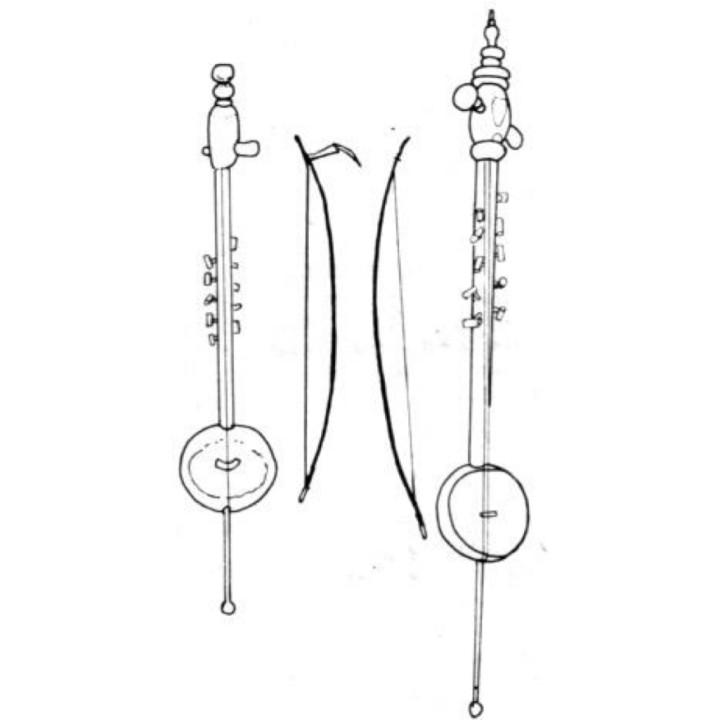Doran Aijk overview
 Duo Lǎng ài jié kè (Pinyin: duō lǎng ài jié kè) is a Uyghur bow-drawn stringed musical instrument. Named for its popularity in the Duolang area of southern Xinjiang. It has a long history, various shapes and soft and rich timbre. It is often used in instrumental ensembles or as the accompaniment of traditional songs and dances such as "Twelve Muqam" and "Macy Lap".
Duo Lǎng ài jié kè (Pinyin: duō lǎng ài jié kè) is a Uyghur bow-drawn stringed musical instrument. Named for its popularity in the Duolang area of southern Xinjiang. It has a long history, various shapes and soft and rich timbre. It is often used in instrumental ensembles or as the accompaniment of traditional songs and dances such as "Twelve Muqam" and "Macy Lap".This unique and unique form of Aijie was once called Harzak in Chinese historical books. It is not only very similar to the Tibetan Genka, but also to the Jichak of Uzbekistan, Turkmenistan, Tajikistan and other countries, especially the Kamanja, which is popular in Iran, Turkey and Kashmir. . At the earliest in southern Xinjiang, there was a kind of Aijie that was similar in shape to Rewap. There were two wooden ears like horns on the resonance box. It was probably changed from playing the stringed instrument Dolangewap to using a bow. , is now extremely rare. Dolangaijie continued to develop in the process of spreading. The main strings were increased from one string to two strings and three strings. Finally, on the basis of the traditional three-string Dolangaijie, it was reformed into a new type of four-string Aijie.
Famous solo pieces include "Ushaq Muqam 1st Dastan Merhuri" and "Jun Haza".
- Chinese name:Doran Aijk
- popular area:Duolang area, southern Xinjiang
- type:stringed musical instrument
- Pinyin:duō lǎng ài jié kè
overview of other similar instruments
- sanyanxiao overview
- Daguangxian overview
- Leiqin overview
- hahao overview
- yandundagu overview
- Han Xiaozheng overview
- Fang Xiang overview
- guanzi overview
- zhuqin (Dao Qin) overview
- zhuiqin overview
- bangzi overview
- three-stringed piano overview
- Gehu overview
- xiao overview
- xiaokonghou overview
- Konghou overview
- Sheng overview
- suona overview
- hulusi overview
- gushao overview
 渝公网安备 50010702504639号
渝公网安备 50010702504639号